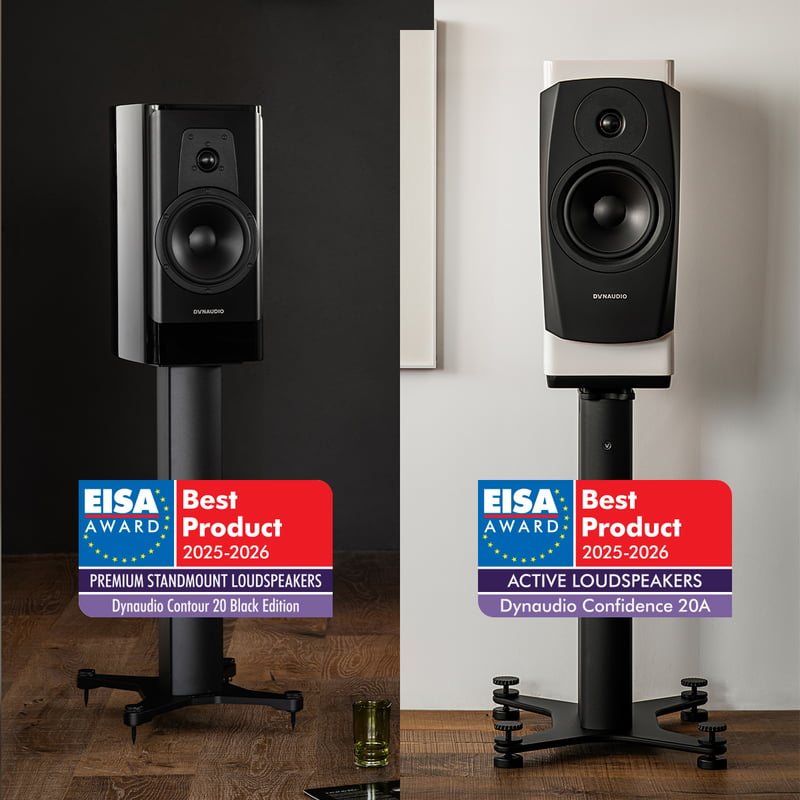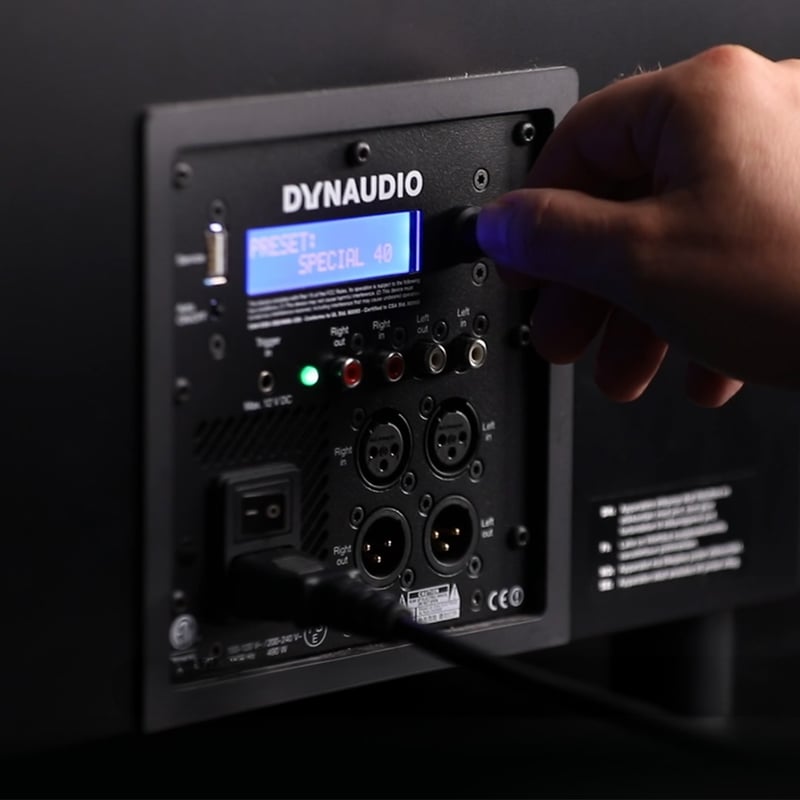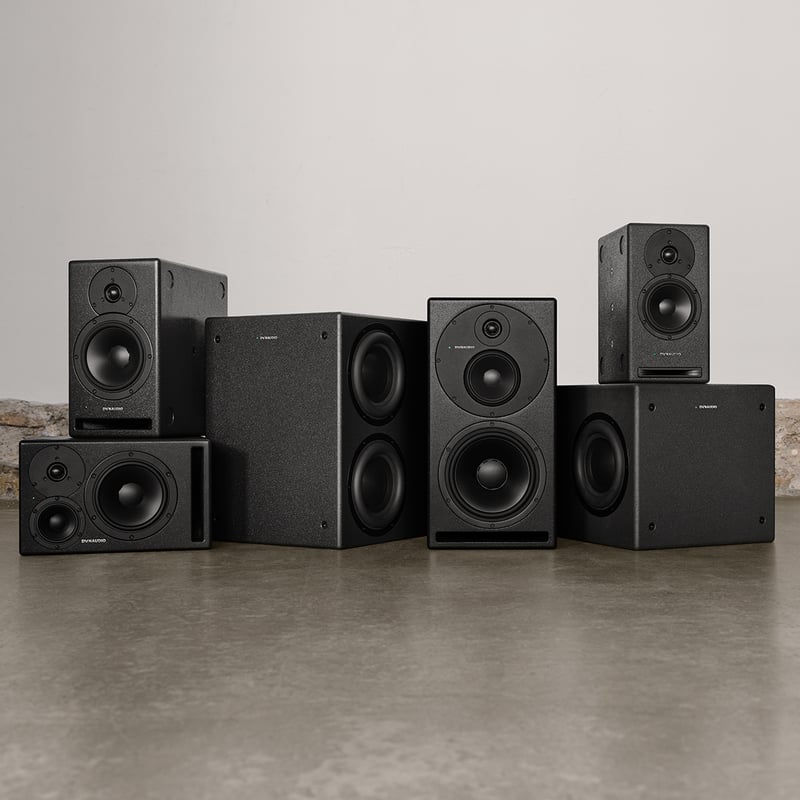The questions have poured in, so in the episode of Ask the Expert, we discuss how to clean tweeters, what to do when your soft-dome has been pushed in by accident and how you can tell if your speakers have been damaged.
This episode's questions
Watch the entire video above or skip to the question you need answers below:
How do I clean a woofer cone?
There's dust stuck on your woofers - how do you clean it off? Here's how to do it, Mark.
How do I clean and maintain the rubber surround?
Craig wants to know whether it's good or bad idea to use rubber nourishing on the surrounds.
How do I clean a tweeter?
Derik, Gustavo, and John are by no means the only three who want a clean tweeter. Here's how to do it.
How do I fix a pushed in tweeter dome?
Ben asks if it's a good idea to repair pushed in domes with vacuums and sticky tape.
Why isn't the tweeter dome better protected?
Yes, why is that?
How do you clean your cabinet?
Mike and Ruben want to know the best way of keeping their cabinets looking as sharp as possible.
What do I do if there's a scratch?
If the accident has happened and your speakers have a scratch, what should you do?
How do I clean the older Contour's steel baffle?
Shahzad has a pair of older Contour speaker and really wants to know the best method for cleaning that steel front baffle.
How do I make sure my speakers aren't damaged?
Finally, Ben, is curious to know how he could determine if there's a problem with his speakers.
Subscribe now: Ask The Expert on YouTube
Thank you!
We want to thank all of you who posted questions on our Facebook posts. We didn't have a chance to answer all of your questions, but we'll keep them in reserve - just in case.
Subscribe now: Ask The Expert on YouTube
If you have any more questions, please share them with us - and the rest of our community - on our Facebook page or directly in the comment section on YouTube.
All the best,
Otto and Christopher
Transcript
Christopher Kjærulff, Content Manager: Welcome to Dynaudio’s Ask the Expert. My name is Christopher. With me today I have a repeat on Ask the Txpert – Otto – Who is one of our customer care managers.
Who is very good at helping our customers with their questions. But you also serve as a vital link between the customer and our product development department. Thank you for being here again. Can you talk a little bit about what you have been up to since the last time we met?
Otto Jørgensen, Customer Care Manager: I have been quite busy answering questions from all of you guys, mostly coming from our website. So yeah.
Christopher: Yeah, I know that from our last episode… You… You got a lot of praise for helping out in a good way. So, we are excited to have you back here.
Otto: Thank you
Christopher: And I am ready to jump in. Are you?
Otto: Sure. Let’s go.
Christopher: Let’s do it.
Christopher: So… Cleaning… Otto… The midrange and bass units. Craig and Mark have asked how you go about cleaning the membrane and the rubber surround.
Otto: Yes, actually that is quite simple because the MSP membrane that we are using in all of our woofers is a quite robust, quite sturdy material. And you shouldn’t be too afraid of handling it. What we recommend is to use a microfiber cloth. Make it moist and basically just wipe it down like you would any other surface. Wipe it off with a dry microfiber cloth afterwards. It should be microfiber. And nothing will basically happen to the membrane. So, it is quite easy to clean.
Christopher: And, that is it? That’s…
Otto: For membrane, that’s it. Yes.
Christopher: Yeah. The rubber surround. How would you… what would you do with that?
Otto: First off, again - clean it with a microfiber cloth. Make sure nothing sits on it. And then treat it with some rubber care. For instance, Sonax. It should be made for specifically for the soft rubber. Other than that, it is again quite a sturdy material. So, it does not… You shouldn’t actually be too worried about handling the material. Just rubbing in with rubber care. And you will make it look nicer but also actually extend the life time of the woofer.
Christopher: So okay, it is basically there is no foul play. If you touch any of this and you could be a little bit rough – not rough but you can clean it as you would.
Otto: Yes. This is the exact opposite of the tweeter. Well, it is actually very sturdy, you can handle it in a lot of ways without being too afraid of it. So, it is not a problem.
Christopher: Moist cloth, dry cloth and then some Sonax to finish off.
Otto: Yes.
Christopher: Perfect.
Christopher: Otto, one of the most common questions we got was about the fragile nature of the soft-dome. Especially how you would clean it?
Otto: Yes. This is also one question we very often get in customer care. If you get dust on the tweeter how do you actually handle that? Basically, the answer is quite simple. You shouldn’t actually try to clean the actual membrane. You can blow away the dust like this. (Blows) Whatever does not fall of by doing that you should leave alone. Because cleaning… Trying to clean the membrane will actually do more damage to the membrane than leaving the dust there.
Christopher: Okay.
Otto: So, it might not look as nice. That you have dust on the dome but regards to sound quality it does not make any difference.
Christopher: And if you try to, you know, get it off, it would do more harm than good…
Otto: You would definitely do more harm than good on the dome so you shouldn’t try that in anyway.
Christopher: So, do not touch it.
Otto: Yeah.
Christopher: If you are unlucky enough to have touched it. We have seen some pictures in our time here. What do you actually do then to get it out?
Otto: What often happens with our dome is that if it gets pushed, don’t try this at home kids. You get a pushed in dome. So now what do you do? As quickly as possible after you find out that this has happened, what you… basically should do is to suck it out.
Christopher: Suck it out?
Otto: So, we have done blowing so it is time for sucking. So, don’t use vacuum cleaner because it might be too powerful and actually damage the membrane. So, it is quite simple process actually. (Inhales) Like… Now it is as good as new.
Christopher: Make out with the tweeter.
Otto: Yeah. Sometimes what happens is that you leave some wrinkles behind. But usually that does not actually effect the sound quality.
Christopher: So, they do not matter.
Otto: Well yeah. It may not like as nice but there is nothing you can do about it. Once it has become wrinkled you cannot change that.
Christopher: No.
Otto: So, if you want it to look completely brand new again there is nothing to do but actually…
Christopher: Get a new tweeter…
Otto: That’s the tweeter, get a new tweeter… Yes. Nothing is new forever. If it needs to look new, you have to buy one…
Christopher: You need to replace it.
Otto: Yes.
Christopher: A question that comes up then is why have we chosen to make it vulnerable.
Otto: Why did we make this design? That’s a… There’s two parts in that question. One of them is the dome we are using is actually a textile dome – like this. But, what you can see is there are a lot of holes in the dome. So even though it is a black material, it is basically see through and this in itself would actually make no sound because of all the holes so it is covered with a coating. That is the actual membrane. This coating is basically what is making the sound. This is just there to hold the coating. The coating would not work without this. But this also makes the dome very light so we have better dynamics because of this way of making it. If we make a thicker dome without the coating we could make a tweeter that would be less fragile but wouldn’t sound as good as the one we are using.
The second part of it is that when you look at the dome it is actually sticking out quite far from the cabinet. This is also done deliberately to help sound quality. We have better dispersion to the sides from the tweeter because it is sticking out like this. So, this is a deliberate choice of sound quality over convenience.
Christopher: There are good reasons for doing it that way.
Otto: Yes. Definitely.
Christopher: So, if we were to sum up I guess… Do not touch it at any circumstances. If you by accident have pushed it in, it is… get it up to your mouth and just suck it out. That is it?
Otto: Yeah.
Christopher: We have a lot of questions about finishes Otto. Mike and Ruben and a lot of people would like to know how to clean them.
Otto: Yes. As a general rule, it is actually quite simple. Use a microfiber cloth, put water on it - then microfiber cloth – wipe down the cabinet. Wipe with a dry cloth afterwards to make sure it does not leave any water in the cabinet. And in normal use you should leave it at that. You shouldn’t actually try to do anything special to maintain the finish.
Christopher: It is just about keeping it simple.
Otto: Keeping… Keep it clean, keep it simple.
Christopher: If you are doing that process and unfortunate enough to find out that you have a scratch or something like that what would you recommend people to do?
Otto: Generally we cannot give one broadband answer that would work for everyone because all the finishes are different. Kind of like the kind of treatment that goes into each kind of finish is different. So make sure that you do not use any chemicals on materials or anything on it other than water before you ask your dealer for this particular finish what should I do and you can work with us to try to find a solution if necessary and if possible. Sometimes there is nothing you can do but just keep it clean.
Christopher: Ok.
Otto: Other times there are things you can do to the finish. But we are not going to give a general answer because it is so dependent on each finish.
Christopher: So… Do not bring out your most expensive car polish because it can do more damage than good.
Otto: Sometimes it can yes.
Christopher: Yes. Okay.
Christopher: The next question is from Shahzad who has a pair of older Contours with steel front baffles and he would like to know how to clean them.
Otto: Cleaning a steel baffle is basically the same as the cabinet. Microfiber cloth – put some water on it – wipe whatever is on the baffle. Wipe it off with a dry cloth. Basically that’s it. You shouldn’t use any cleaner any material on it because that can actually hurt the surface of the baffle.
Christopher: So just the microfiber cloth again.
Otto: Yes.
Christopher: Perfect.
Christopher: Ben has been unfortunate and dropped his speakers on the floor. So he asks how do you make sure that they are not damaged.
Otto: Actually, it is simpler than you might think. Usually if you damage a driver there will be some kind of damage to the voice coil or something and it would make a very obvious scraping sound. Basically, if it sounds fine and if it looks fine probably it is fine. There is nothing to worry about it. The most damages that happens to drivers as well as tweeters and subwoofers – it is actually very noticeable – if it is an actual damage you are not really in doubt. So, if you are in doubt probably nothing is wrong with it.
Christopher: So, when you say noticeable, is that both visually and sound-wise?
Otto: It could look fine from the outside but again the voice coil can be scraping on but then when you are playing music you would be hearing some – some bad noises. And usually they are very obvious. So, if you are hearing strange noises from the speakers that shouldn’t be there, contact the dealer.
Christopher: Okay.
Otto: Yeah.
Christopher: Contact the dealer.
Otto: Yes.
Christopher: Otto, we have been on roll here with a lot of good questions but unfortunately, we are out of questions now so we have to end the show but before we do so I want to sum up. With the tweeter, it is – do not touch, blow at it gently – mid-range and bass units - microfiber cloth - and the same goes for the cabinet use a microfiber cloth. Thank you so much for being on here today.
Otto: You are welcome. Thank you.
Christopher: And thank all of you for your excellent questions. See you next time!
Sign up to get more great articles
Nothing compares to the satisfaction of knowing – for a fact – that something is as good as it gets





